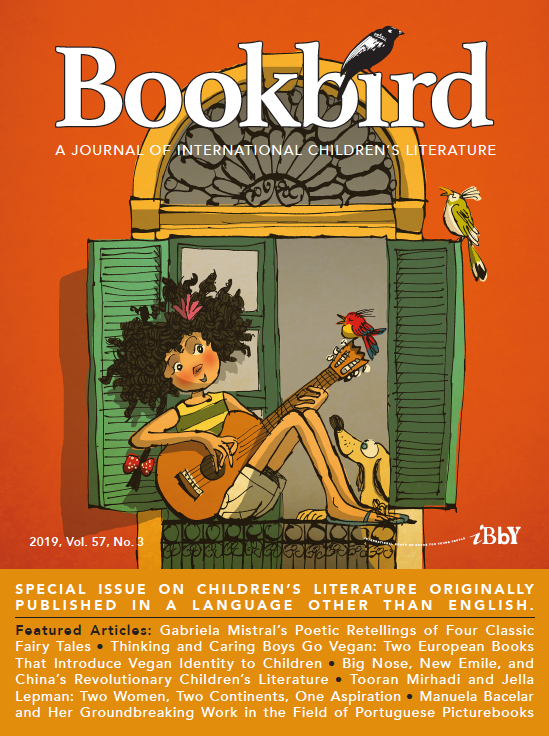Providing a Forum for Authors, Illustrators, and Scholars Who Work in Languages Other Than English
In spite of encouraging trends over the past few years, texts that are originally published in English continue to dominate the international exchange of stories. As a journal of international children’s literature, Bookbird strives to provide a global forum to authors, illustrators, and scholars who work and create in languages other than English. For this reason, the current special issue focuses exclusively on contemporary children’s and young adult (YA) literature originally published in a language other than English, including works that have subsequently been translated into English and other languages, as well as works that have not been translated yet.
In “Gabriela Mistral’s Poetic Retellings of Four Classic Fairy Tales,” Andrea Casals Hill presents and analyzes the acclaimed Chilean author’s poetic retellings of Snow White, Little Red Riding Hood, Cinderella, and Sleeping Beauty, which have been recently republished as illustrated books. Gabriela Mistral was the first Latin American author to receive a Nobel Prize in Literature. Casals Hill asserts that her poetic retellings of Caperucita Roja, Blanca, Cenicienta, and Bella reflect Mistral’s ethical commitment to enable the empowerment of her invisible, abandoned, and abused young female audience.
In “Thinking and Caring Boys Go Vegan: Two European Books That Introduce Vegan Identity to Children,” Marianna Koljonen approaches veganism as a counter-discourse to cultural and societal hegemony. Based on ecofeminist and intersectional analysis of gender and family norms in vegan identity books for children, Koljonen asks questions about the audience of these texts and about the ways in which these books introduce, explain, and support veganism. Koljonen provides a detailed analysis of two illustrated vegan identity children’s novels, one from Finland and the other from Germany.
For the third featured article, Lijun Bi and Xiangshu Fang examine Mao Dun’s “The Story of Big Nose” (1936) and Lao She’s “New Emile” (1936). They briefly explore the context of revolutionary children’s literature that flourished in China during the 1930s, before they proceed to compare and analyze these dramatically different stories by two of the most important Chinese authors of that era.
The fourth article, “Tooran Mirhadi and Jella Lepman: Two Women, Two Continents, One Aspiration,” is a printed version of Leila (Roya) Maktabi Fard’s 36th IBBY Congress keynote speech. An Iranian children’s literature researcher, critic, and librarian based in Munich, Maktabi Fard compares and draws parallels between these two exceptional, perseverant, hardworking, and pioneering women who established influential organizations for children’s literature, one in the East and the other in the West.
In the fifth and final featured article, Carina Rodrigues discusses and introduces to an international audience Manuela Bacelar and her groundbreaking work. Bacelar was a trailblazer and eventually became a most esteemed figure in the field of Portuguese picturebook production. Even more countries, languages, and cultures are represented in this internationally diverse special issue through the increased number of “Postcards” and the wonderful texts included in the rest of the journal sections. We hope that you find this rich and vibrant diversity as inspiring and encouraging as we do.


